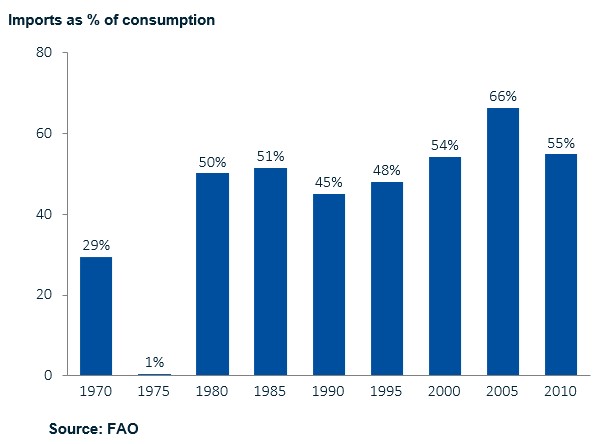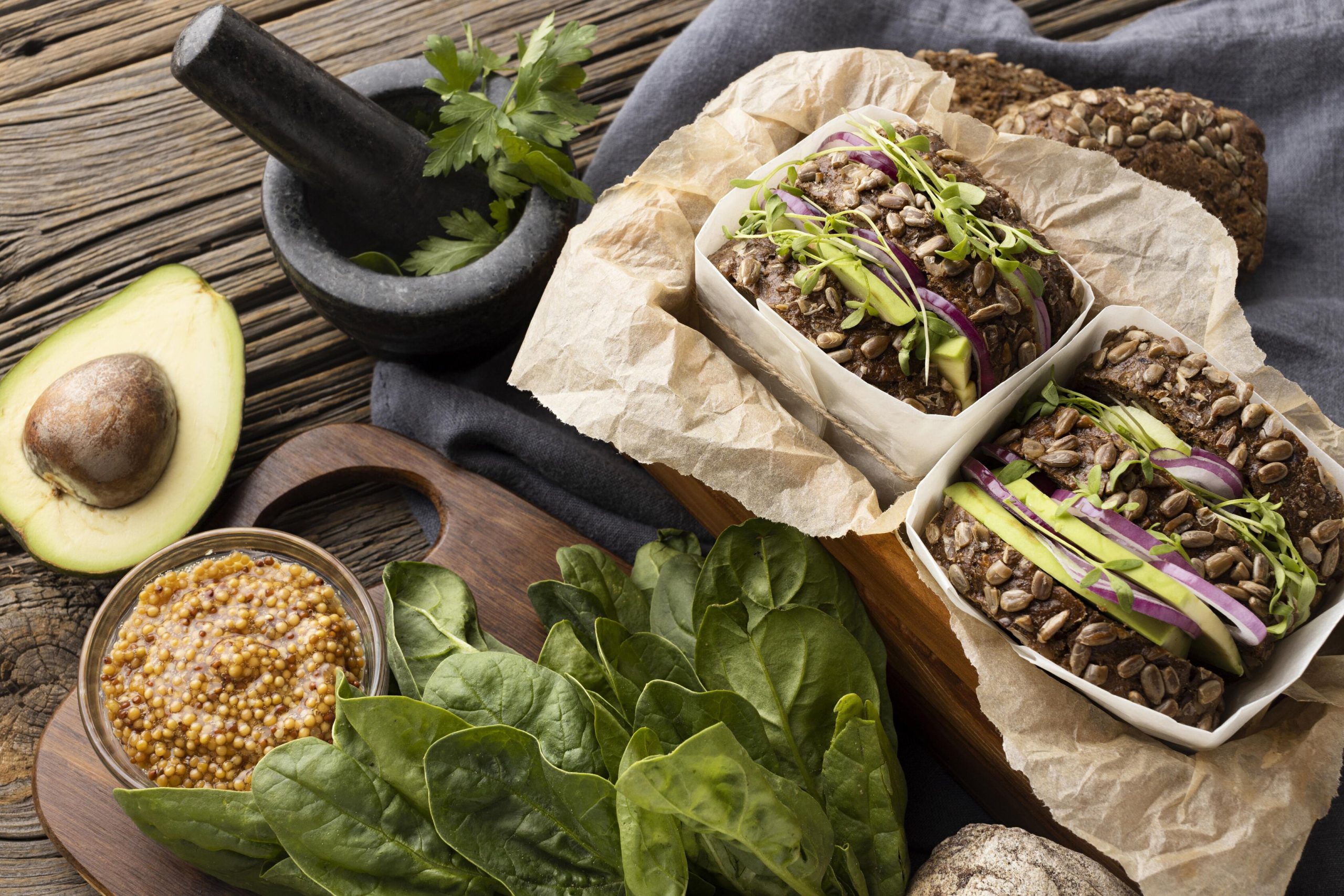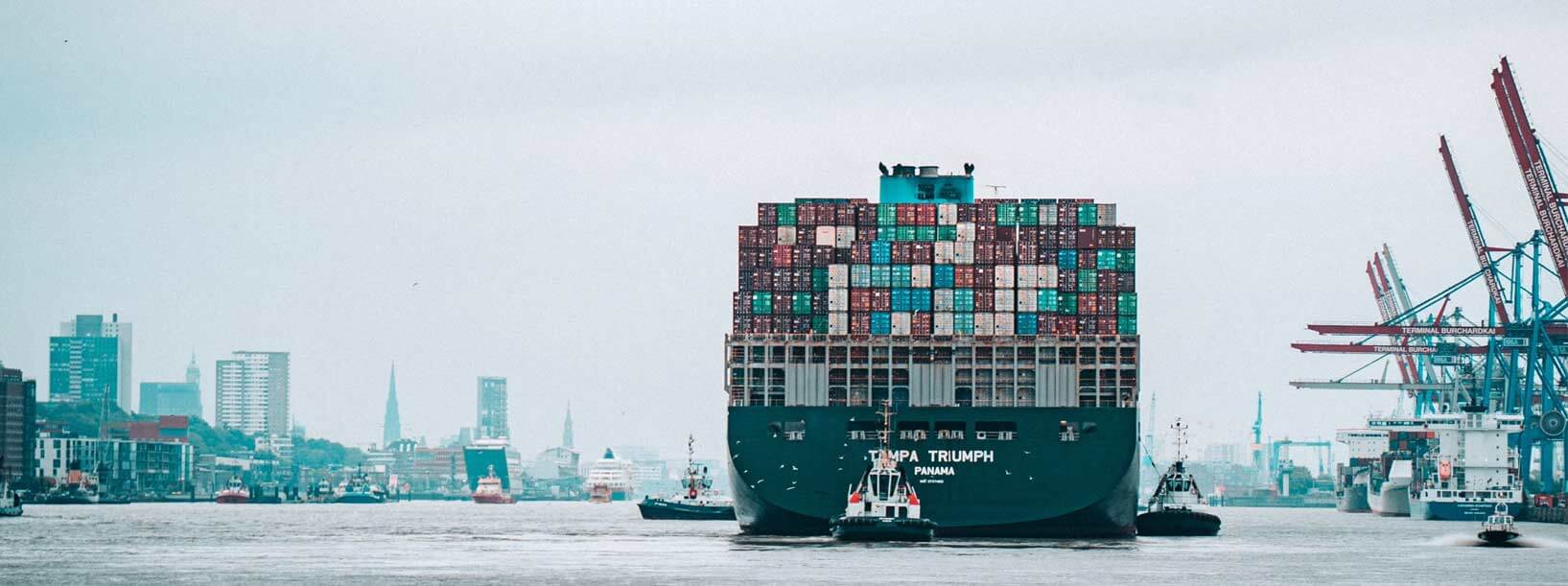The dangers of a cash-crop first policy – The case of Ivory Coast
This is part two of our African Agriculture series – where we explore successes, failures, and the way forward for African Agriculture policies.
The dangers of a cash-crop first policy – The case of Ivory Coast
As a continent rich with natural resources, Africa has a long and complex history with the cultivation and exploitation of cash-crops as a source of income. Many African countries rely heavily on cash-crops to boost their exports and generate foreign currency. It is estimated that cash-crops constitute over 50% of Africa’s total agricultural exports.
Accompanying the increase in global demand for some of Africa’s major agricultural commodities in the late 1970s (such as cocoa, coffee, oil palm, tree nuts, and rubber), multiple agriculture dependent countries -particularly in East and West Africa- increased their efforts to boost the production of cash-crops and incentivized their farmers to switch from food-crops to cash-crops, with the promise of improved revenues.
Côte d’Ivoire’s experience with a cash-crop first policy is a prime example of how such policies, despite their well-intentioned objectives, can have a nefarious impact on rural development and small farmer poverty alleviation. In fact, small Ivorian cocoa farmers have been grappling with heightened food insecurity and a dire financial situation as recently as the 2016-2017 period.
Prior to the cash-crop first policy, Côte d’Ivoire’s main agricultural policies were instead aimed at increasing food production to satisfy the needs of its growing population. One of the most successful policies from this era was the rice support program in the 1970s, which helped boost rice production within the country and allowed Côte d’Ivoire to reach high levels of food self-sufficiency.
Rice proved to be a good fit for the country’s small farmers given to its ability to grow well in the local climate (both local and foreign varieties), as well as produce multiple harvest with high yields throughout the year. Rice also played a dual role, as it provided sustenance to the farmer and his family, while at the same time generating some income for its sale.
Despite the early successes of the rice development strategy, Côte d’Ivoire began incentivizing its small farmers to adopt cash-crops to boost revenues. As a country with a long history of cocoa cultivation, Cocoa beans stood out as the cash-crop of choice for many small farmers.
At the turn of the 1980s, an economically ailing Côte d’Ivoire decided to completely abandon the policy of self sufficiency in terms of food production, particularly relating to rice production, and focus on expanding the production of Cocoa. This new positioning was mainly motivated by a desire to boost the country’s exports and curb a growing budget deficit. Additionally, the policy shift was built on the assumption that the country will be able to import its food from abroad with the substantial revenues generated by Cocoa exports.

The conversion proved successful, with many small farmers switching to cocoa cultivation, and Côte d’Ivoire soon became the world’s biggest Cocoa producing country.

While at first glance the new cash-crop first policy might appear as a net improvement for Côte d’Ivoire and its small farmers, particularly during the years of high cocoa prices, it soon proved to be highly damaging to small farmer’s livelihood and severely deteriorated food security across rural areas.
Small farmers who previously cultivated local rice varieties, which were able to generate high yields without the need for large land holdings or the heavy use of modern agricultural techniques, were faced with difficult to grow cocoa trees, which required high levels of care and inputs to produce acceptable yields. Farmers were also used to be harvesting rice multiple times during the years (2 to 4 times), while cocoa beans mostly produce a single harvest per year.
Farmers and their families, who formerly relied on rice to feed themselves and generate extra revenues from its sale to the state, became fully dependent on the production of Cocoa and its sale on the international markets for their livelihood.
Moreover, the lack of a clear route to market for small farmers and their reliance on a long chain of intermediaries along the value chain, with multiple levels of aggregators and wholesalers, started impacting the sector. In fact, small farmers were only receiving a fragment of the selling price in the global market. These low levels of revenues reduced small farmers’ ability to feed themselves and their families, while at the same time preventing them from investing in the land to improve yields.
In effect, the cash-crop first policy had a limited positive impact on small farmers revenues, while it completely stripped them from any possibility of self-subsistence. Even worse, during price crash periods (even small drops in price can have a large impact), small farmers are stuck with a commodity they can’t eat, and face extremely long waiting periods to receive their compensation from the government[1]. The problem became so severe in 2015, that many farmers had difficulties feeding themselves due to the non-payment by the purchasing authority.

While the state and the many layers of intermediaries largely profited from the periods of high cocoa prices on the international market, these financial benefits rarely made their way down to the small farmers on the ground.
The cash-crops first policy has largely shown its limits in the Ivorian case, particularly given the fact that the implementation was largely inadequate. The lack of support for small farmers after their switch and the emergence of a complex chain of intermediaries (due to poor infrastructure and the lack of easy market access in rural areas), limited small farmer’s ability to profit from periods of high international prices, while at the same time exposing them to the full extents of price fluctuations.
The Ivorian example showcases the need to strike a balance between the cultivation of cash-crops and food-crops in Africa, as both have a complementary role to play in the development of a healthy agricultural sector.
Due to the inherent price fluctuations of commodities, cash crops are unable to provide farmers with sufficient security to sustain a decent livelihood, at least not on their own. While safety net policies can play a large role in alleviating some of these issues, the Ivorian case[2] proves that countries with limited financial resources to expend will be unable to honor their commitments to farmers during periods of crashing prices.
Lastly, a cash-crops fist policy can only be successful when small farmers are able to effectively reach the market on their own or by forming strong cooperatives, otherwise intermediaries will be the ones profiting from these market imperfections.
Côte d’Ivoire learned these lessons the hard way, as the country has been slowly recovering from the difficulties of the 2015-2017 period. As a response to these difficulties, the country has been slowly bringing back its rice production policies and even announced plans to curb cocoa production levels in the coming years. If successfully implemented, this new shift in policy could help the country reach a new balance, where the need to generate export revenues and the necessity to feed its population with local production can coexist.
[1] All Cocoa beans in Côte d’Ivoire are bought by a government owned purchasing authority, which sets the buying price yearly
[2] The set yearly buying price plays the role of a safety net in CI, as it guarantees a minimum revenue to the farmer
Ibrahim Zaaimi – Research Associate
You may also like
Warning: Undefined variable $content in /var/www/sdomains/nexatestwp.com/infomineo.nexatestwp.com/public_html/wp-content/themes/infomineo/single.php on line 235
Warning: Undefined variable $content in /var/www/sdomains/nexatestwp.com/infomineo.nexatestwp.com/public_html/wp-content/themes/infomineo/single.php on line 235
Warning: Undefined variable $content in /var/www/sdomains/nexatestwp.com/infomineo.nexatestwp.com/public_html/wp-content/themes/infomineo/single.php on line 235
Warning: Undefined variable $content in /var/www/sdomains/nexatestwp.com/infomineo.nexatestwp.com/public_html/wp-content/themes/infomineo/single.php on line 235
Warning: Undefined variable $content in /var/www/sdomains/nexatestwp.com/infomineo.nexatestwp.com/public_html/wp-content/themes/infomineo/single.php on line 235
Warning: Undefined variable $content in /var/www/sdomains/nexatestwp.com/infomineo.nexatestwp.com/public_html/wp-content/themes/infomineo/single.php on line 235








